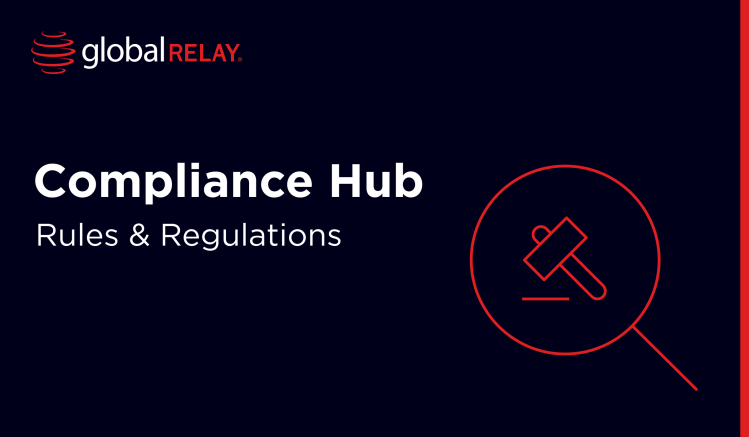
GDPR compliance in life sciences
Life sciences companies are grappling with heightened expectations to protect patient data while advancing medical research. Meeting General Data Protection Regulation (GDPR) requirements in 2025 demands strategic implementation of encryption, anonymization, and AI technologies. Here’s how your organization can achieve this.
Written by a human
In Brief:
- One of the key challenges faced by the life sciences and healthcare sectors is how to balance privacy protection with data access for furthering medical advancements
- Organizations in this sector must maintain privacy standards as mandated by the Food and Drug Administration (FDA) in the U.S., and GDPR and the European Medicines Agency (EMA) in the EU
- By combining encryption, data anonymization, and AI, life sciences organizations can forge a comprehensive framework for GDPR compliance
The life sciences sector operates at the intersection of innovation and regulation, where protecting sensitive patient information is both a legal requirement and an ethical imperative.
One critical challenge for GDPR compliance in life sciences organizations is balancing data accessibility for research purposes with stringent privacy protections.
But since the consequences of GDPR violations are severe, including fines up to 4% of global annual revenue and the destruction of consumer trust, life sciences organizations can’t afford to put a foot wrong.
This, combined with the fact that bad actors are continuously finding new ways to access sensitive data, creates an imposing mix of challenges to be navigated.
However, modern B2B SaaS data compliance solutions have evolved to address these challenges through three critical technologies:
- Encryption
- Data anonymization
- Artificial intelligence (AI)
These tools support regulatory requirements by creating a foundation for secure innovation that healthcare and life sciences organizations can use as part of their GDPR compliance strategy.
Encryption for GDPR-compliant data security
Encryption for GDPR compliance forms the backbone of data protection in clinical research and pharmaceutical operations. GDPR Article 32 mandates appropriate technical measures to ensure data security, while encryption serves as the gold standard for protecting personal data both at rest and in transit.
Today, advanced encryption methods provide multiple layers of protection:
- End-to-end encryption protects data throughout its entire lifecycle, from collection (e.g. in clinical trials) to storage in research databases
- Field-level encryption allows specific sensitive elements like patient identifiers to be encrypted individually, enabling partial data access for authorized personnel
- Homomorphic encryption enables computations on encrypted data without decryption, supporting collaborative research while maintaining privacy
- Key management systems ensure encryption keys are rotated regularly, and access is properly controlled
The implementation of robust encryption for GDPR data security also supports information portability requirements under GDPR Article 20, allowing patients to request their data in a structured format while maintaining security throughout the transfer process.
Data anonymization for GDPR compliance privacy standards
Techniques that drive data anonymization in life sciences enable organizations to harness the power of sensitive data for research while eliminating privacy risks. When properly implemented, anonymized data falls outside GDPR's scope, providing greater flexibility for research and collaboration activities.
Effective anonymization strategies include:
- Direct identifier removal, which eliminates obvious identifiers like names, addresses, and social security numbers
- Quasi-identifier suppression to address indirect identifiers such as rare diagnoses, specific demographics, or unique treatment combinations
- Differential privacy adds mathematical noise to datasets, preventing re-identification while preserving statistical accuracy
- Synthetic data generation creates artificial datasets that maintain the statistical properties of original data without containing real patient information
However, anonymization presents notable challenges:
- Re-identification risks emerge when multiple datasets are combined or when anonymization techniques are insufficient
- Data utility trade-offs can reduce the scientific value of datasets when anonymization is too aggressive
- Regulatory interpretation varies across jurisdictions, creating uncertainty about what constitutes truly anonymous data
For life sciences organizations in Europe, the EMA provides guidance on anonymization best practices with respect to clinical trial data. Among many other recommendations, the guidance emphasizes that organizations must conduct regular assessments to ensure their anonymization techniques remain effective against evolving re-identification methods.
GDPR has impacted the FDA’s data management practices too, with specific areas of concern including clinical trial data, new drug applications, and adverse event reporting.
AI's role in supporting GDPR data monitoring
There is no doubt that AI GDPR monitoring systems have transformed how life sciences organizations manage compliance, shifting the focus from reactive to proactive data protection strategies.
The three key areas that AI in GDPR data monitoring in 2025 enhances are:
- Automated data discovery
- Continuous risk assessments
- Real-time breach detection
Today’s market has seen the evolution of multiple solutions driven by AI, with some of the key AI applications including:
- Automated data mapping to discover and catalog personal data across distributed systems, maintaining current inventories required under GDPR Article 30
- Behavioral analytics that identify unusual data access patterns that may indicate security breaches or unauthorized use
- Privacy impact assessments to automatically evaluate new data processing activities against GDPR requirements
- Data subject rights automation that streamlines responses to access, deletion, and portability requests
When it comes to intelligent data monitoring, machine learning algorithms excel at identifying potential privacy violations that human reviewers might miss. For instance, AI systems can detect when research data contains indirect identifiers that could enable re-identification when combined with publicly available information.
The integration of AI monitoring also supports GDPR's accountability principle by maintaining detailed logs of data processing activities and demonstrating proactive privacy protection measures to regulators.
Final thoughts
The convergence of encryption, data anonymization, and AI creates a comprehensive framework for GDPR compliance that life sciences organizations need in 2025. These technologies work synergistically, with encryption for protecting data during processing, anonymization to enable broader research applications, and AI to ensure continuous compliance monitoring.
Organizations that harness the power of this technological triangle in their data operations position themselves for sustainable growth while maintaining the highest compliance standards. The most effective implementations integrate these technologies seamlessly, creating systems that protect privacy without hindering scientific progress.
Global Relay’s AI-powered cloud archive and compliance solutions securely manage sensitive data, streamline GDPR-compliant processes, and maintain audit-ready records for regulatory adherence. Find out how Global Relay supports healthcare and life sciences organizations with complete data integrity using AI-powered compliance solutions.
